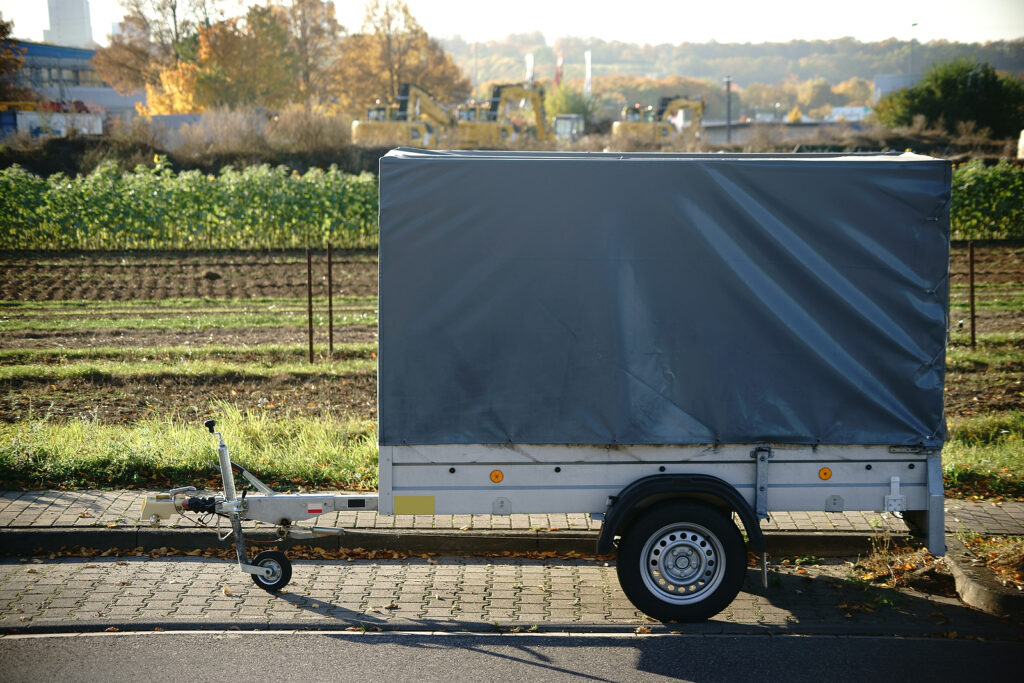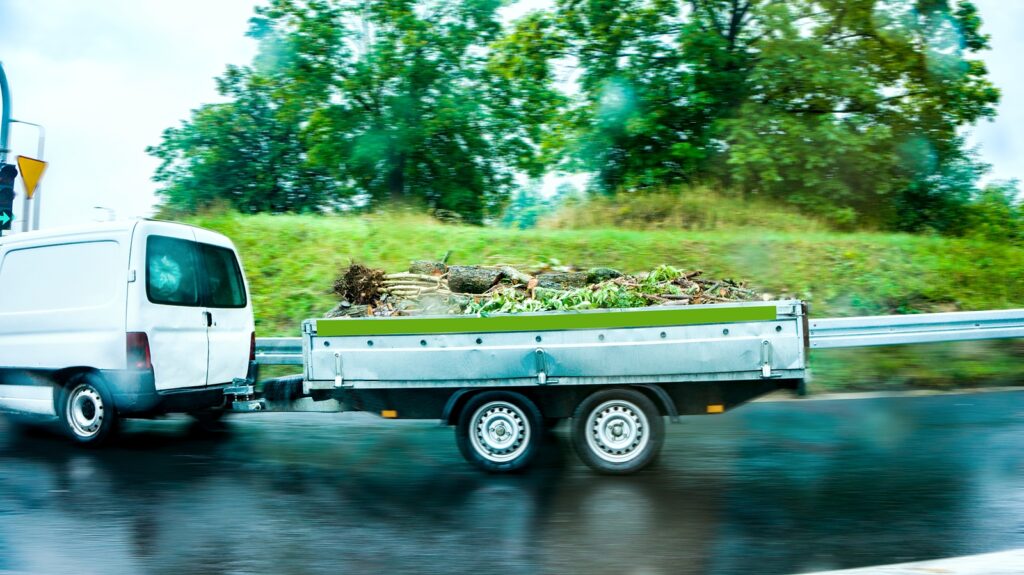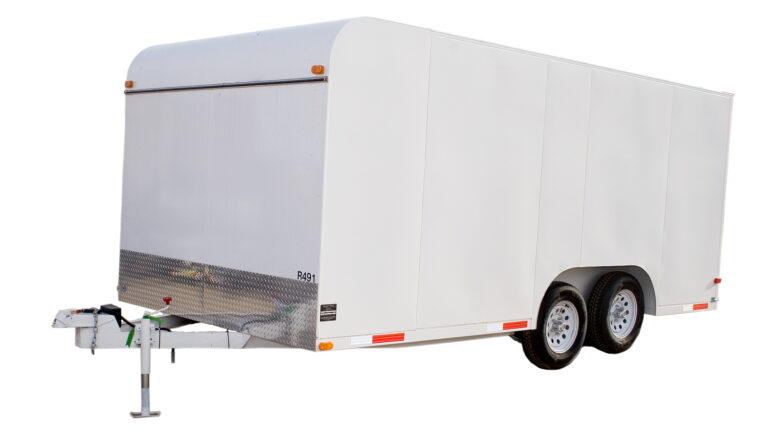As an avid outdoor enthusiast and adventure seeker, I've witnessed the growing popularity of overlanding in recent years. There's something truly thrilling about embarking on long-distance, self-reliant journeys to remote destinations, especially when they involve rugged terrain and uncharted paths.
To truly immerse myself in this exciting lifestyle, I realized that having the right equipment is absolutely crucial. That's why I decided to take on the challenge of building my very own DIY overland trailer, creating the ultimate adventure mobile from scratch.
In this comprehensive guide, I want to share my journey and experiences with you, as we delve into the captivating world of DIY overland trailers. Together, we'll explore the key steps and considerations for crafting your own rugged companion for your outdoor escapades. Whether you're a seasoned overlander or a newcomer to this exhilarating realm, join me in discovering the satisfaction and freedom that comes with building your own overland trailer, tailored to your unique needs and aspirations.
Why Build Your Own DIY Overland Trailer?
Before we dive into the nitty-gritty of building your DIY overland trailer, let's explore the reasons why you might want to undertake this project in the first place.
Customization
One of the most significant advantages of building your overland trailer is the level of customization it offers. You can tailor it to your specific needs and preferences, ensuring that it suits your style of adventure perfectly.
When it comes to customization, think about the layout and features that will enhance your overlanding experience. Are you an avid camper who needs a spacious sleeping area and a fully equipped kitchen, or do you prioritize storage space for gear and equipment? By building your own trailer, you have the freedom to design every aspect according to your preferences.
Cost-Efficiency
Building your overland trailer can be a cost-effective alternative to purchasing a pre-built one. While there are upfront expenses, the long-term savings can be substantial.
When you buy a ready-made overland trailer, you're not only paying for the materials and labor but also the manufacturer's profit margin. By sourcing materials and investing your time and effort into the project, you can significantly reduce the overall cost. Additionally, you can choose budget-friendly materials and components that meet your needs without breaking the bank.
Learning Experience
Constructing your DIY overland trailer is an excellent opportunity to learn valuable skills such as welding, woodworking, and electrical work. It's a rewarding and educational experience for anyone interested in DIY projects.
The process of building an overland trailer will expose you to various trades and crafts. You'll gain proficiency in welding while fabricating the trailer frame, refine your woodworking skills when constructing the body, and develop electrical expertise when setting up the trailer's lighting and power systems. This hands-on learning experience can be immensely satisfying and expand your skillset.
Pride of Ownership
There's a special sense of pride and satisfaction that comes from using something you've built with your own hands. Your DIY overland trailer will be a reflection of your craftsmanship and creativity.
Imagine embarking on an epic overlanding adventure with a trailer that you designed and built from scratch. The feeling of accomplishment and ownership is unparalleled. Every time you hit the trail, you'll know that your trailer is a unique creation, tailor-made to fulfill your adventure dreams.
Now that we've explored the benefits, let's get into the step-by-step process of building your DIY overland trailer.
Check out our post on DIY Overland Camper
Building Your DIY Overland Trailer: Step by Step
Step 1: Planning and Design
Research and Inspiration
Start by researching existing overland trailers and gaining inspiration from various designs. This will help you identify the features and functionalities you want for your trailer. Websites, forums, and social media platforms are great resources for gathering ideas.
Before you start sketching your trailer's design, it's essential to have a clear vision of what you want to achieve. Browse overland community forums, follow overlanding influencers on social media, and attend overlanding expos if possible. These activities will expose you to a wide range of trailer designs, allowing you to cherry-pick the features that resonate with your adventure style.
Determine Your Needs
Consider your specific needs and requirements for your overland adventures. Do you need extra storage for camping gear, a kitchen setup, or a sleeping area? Make a list of the must-have features.
To determine your needs, think about the types of overlanding trips you plan to undertake. Are you a solo traveler or part of a family or group? Will you be traveling in extreme weather conditions? Will you require amenities like a shower and toilet? By answering these questions, you'll create a comprehensive list of requirements that your DIY overland trailer must meet.
Sketch Your Design
Sketch a rough design of your overland trailer, including dimensions and layout. This will serve as a blueprint for your project.
Your sketch doesn't need to be a masterpiece, but it should provide a clear representation of your trailer's layout and features. Include measurements for the trailer's length, width, and height, as well as the placement of doors, windows, storage compartments, and any other components. This sketch will be your reference point throughout the construction process.

Step 2: Acquire Materials and Tools
Materials
Depending on your design, you'll need various materials, including steel tubing for the frame, plywood for the body, axles, wheels, and various hardware like bolts, nuts, and hinges. Make a comprehensive list of materials and purchase them from a reputable supplier.
The selection of materials plays a crucial role in the durability and performance of your DIY overland trailer. Opt for high-quality steel tubing for the frame to ensure structural integrity. When choosing plywood for the body, consider marine-grade or exterior-grade plywood for enhanced weather resistance. By investing in quality materials, you'll create a trailer that can withstand the rigors of overlanding.
Tools
To build your overland trailer, you'll need a range of tools such as a welder, angle grinder, drill, saw, measuring tape, and safety equipment like welding gloves and goggles. Ensure you have all the necessary tools before starting the project.
Gathering the required tools is a critical step in the preparation process. If you're not familiar with certain tools or techniques, consider taking classes or seeking guidance from experienced DIYers. Safety should be a top priority, so don't skimp on safety equipment, and always follow proper safety practices when using tools.
Step 3: Frame Construction
Welding the Frame
Begin by constructing the trailer frame using the steel tubing. Ensure that it's sturdy and able to support the weight of the trailer and your gear. If you're not experienced in welding, consider enlisting the help of a professional or taking welding classes.
The frame is the foundation of your overland trailer, so precision and strength are essential. When welding, pay close attention to ensuring that all joints are securely bonded. The frame's design should align with your trailer's overall structure and support the weight distribution you anticipate.
Suspension and Axles
Install the axles and suspension system according to your trailer's design. Make sure everything is properly aligned and secure.
The suspension and axles are critical components that influence your trailer's ride quality and off-road capability. Select suspension components that match the load-bearing capacity you require. Additionally, consider the terrain you'll encounter during your overlanding trips when choosing the type of suspension (e.g., leaf spring, torsion bar, or independent).
Step 4: Building the Body
Cutting and Assembling
Cut the plywood sheets according to your design's dimensions and assemble the body of the trailer. This is where your woodworking skills will come in handy. Consider adding insulation for comfort during different weather conditions.
The body of your overland trailer should align precisely with the dimensions and layout you sketched in the planning phase. Accurate cutting and assembly are crucial to ensure that the body fits securely onto the frame and provides the desired interior space. Insulation is especially important if you plan to use the trailer in varying climates, as it helps regulate interior temperatures.
Exterior Finish
Seal and paint the exterior of the trailer to protect it from the elements. Choose a high-quality, weather-resistant paint to ensure durability.
The exterior finish serves both functional and aesthetic purposes. It not only protects the trailer from moisture and corrosion but also enhances its appearance. Proper surface preparation, such as sanding and priming, is essential before applying the paint. Consider using automotive-grade or marine-grade paint for the best results.
Step 5: Electrical and Plumbing
Wiring
Install the electrical components of your overland trailer, including lights, a battery system, and any other accessories you plan to use. Ensure all wiring is properly insulated and organized to prevent electrical issues on the road.
The electrical system of your DIY overland trailer should be designed with reliability and safety in mind. Use high-quality wiring and connectors, and protect all exposed wires with conduit or tubing. Test the electrical components thoroughly to ensure they function correctly before hitting the road.
Plumbing
If your design includes a water system, install plumbing for sinks, showers, or any other water-related features. Make sure all connections are secure and leak-proof.
The plumbing system should be designed for efficiency and ease of use. Use appropriate hoses, pipes, and fittings for freshwater and wastewater systems. Incorporate a water pump and a water heater if needed. Conduct pressure tests to identify and address any leaks in the plumbing system.

Step 6: Interior Setup
Furnishing
Design and install the interior features of your overland trailer. This may include cabinets, seating, a sleeping area, and any other customized components. Use lightweight materials to keep the trailer's weight manageable.
The interior setup of your overland trailer should maximize functionality and comfort. Consider modular furniture designs that allow you to adapt the space for different purposes. Incorporate storage solutions that optimize the available space for gear, clothing, and supplies. The interior layout should reflect your personal preferences and make your overlanding trips more enjoyable.
Storage Solutions
Incorporate efficient storage solutions to make the most of the available space. Overland trailers are all about maximizing storage for your gear and supplies.
Overland travel often requires carrying a variety of equipment, from camping gear to cooking utensils and tools. Efficient storage solutions, such as slide-out drawers, fold-down shelves, and adjustable compartments, will help you organize your essentials effectively. Consider designing storage spaces that are easily accessible and secure, even on rough terrain.
Step 7: Final Touches
Accessories
Add any accessories that enhance the functionality and aesthetics of your DIY overland trailer. This could include roof racks, awnings, and exterior lighting.
The final touches on your overland trailer should align with your specific needs and preferences. Roof racks are ideal for carrying additional gear or mounting a rooftop tent, while awnings provide shade and protection from the elements. Exterior lighting enhances safety and visibility, especially when setting up camp in the dark.
Safety Features
Don't forget essential safety features like brakes, reflectors, and fire extinguishers. These are crucial for your safety and the safety of others on the road.
Safety should always be a top priority when building and using your DIY overland trailer. Ensure that your trailer meets all legal requirements for road use, including lighting and braking systems. Reflectors and safety signage are essential for visibility, especially when towing the trailer at night. Keep a fire extinguisher on board to address potential emergencies during your adventures.
Step 8: Testing and Fine-Tuning
Before hitting the road on your adventures, thoroughly test your DIY overland trailer. Check for any issues with the electrical system, plumbing, or structural integrity. Make necessary adjustments and fine-tune the trailer to ensure it performs optimally.
Testing and fine-tuning are critical steps to guarantee that your overland trailer is road-ready. Conduct a comprehensive systems check, including the electrical, plumbing, and braking systems. Take your trailer on short test trips to identify any handling or performance issues. Address any discovered problems promptly to ensure a safe and trouble-free overlanding experience.

Frequently Asked Questions (FAQs)
1. Is building a DIY overland trailer suitable for beginners?
Building a DIY overland trailer can be a challenging project, especially for beginners with limited experience in welding, carpentry, and electrical work. However, with dedication and a willingness to learn, beginners can successfully complete the project. It's essential to start with a well-thought-out plan, gather the necessary skills, and seek guidance from experienced DIYers or professionals when needed.
2. How long does it take to build a DIY overland trailer?
The time required to build a DIY overland trailer can vary significantly based on factors such as your experience, the complexity of your design, and the availability of tools and materials. On average, the construction process may take several weeks to several months. It's crucial to be patient and allow sufficient time to ensure that each aspect of the trailer is built correctly.
3. What tools are essential for building a DIY overland trailer?
Building a DIY overland trailer requires a range of tools, including a welder, angle grinder, drill, saw, measuring tape, and safety equipment like welding gloves and goggles. Additionally, you may need woodworking tools for constructing the body, electrical tools for wiring, and plumbing tools for installing water systems. Before starting your project, make a comprehensive list of tools based on your design's requirements.
4. Can I legally tow a DIY overland trailer on public roads?
In most countries, you can legally tow a DIY overland trailer on public roads, provided that the trailer meets all safety and legal requirements. These requirements may include proper lighting, braking systems, reflectors, and registration. It's essential to research and comply with your local and national regulations regarding trailer construction and towing.
5. How do I ensure the structural integrity of my DIY overland trailer?
Ensuring the structural integrity of your DIY overland trailer is crucial for safety and performance. To achieve this, follow your design plans meticulously, use high-quality materials, and pay close attention to welding and assembly. If you have concerns about welding, consider consulting a professional welder or engineer to review your work and provide guidance on reinforcement if necessary.
6. Can I use a DIY overland trailer for off-road adventures?
Yes, you can use a well-built DIY overland trailer for off-road adventures, provided that it is designed and constructed to withstand off-road conditions. This includes having a robust frame, durable suspension, and secure attachment points for off-road tires. Be sure to test your trailer's off-road capabilities in controlled environments before embarking on challenging off-road journeys.
Final Thoughts
Building my own DIY overland trailer has been an incredibly fulfilling journey. As an avid outdoor enthusiast, I've witnessed the growing popularity of overlanding, and I decided to take on the challenge of creating my ultimate adventure companion from scratch.
This project has allowed me to customize every aspect of the trailer to suit my specific needs and preferences, offering me the freedom to design the layout, choose the features, and optimize storage for my gear and supplies. Beyond the cost-efficiency and invaluable learning experiences, the true reward is the pride of ownership.
Every weld, every piece of plywood, and every electrical connection represents my craftsmanship and creativity, making each adventure an even more special and self-reliant experience. Now, as I prepare to hit the open road with my custom-built overland trailer, I'm filled with anticipation for the incredible adventures and unforgettable memories that await.
Sources
https://www.4xoverlandadventures.com/anatomy-of-a-diy-trailer-part-1/




